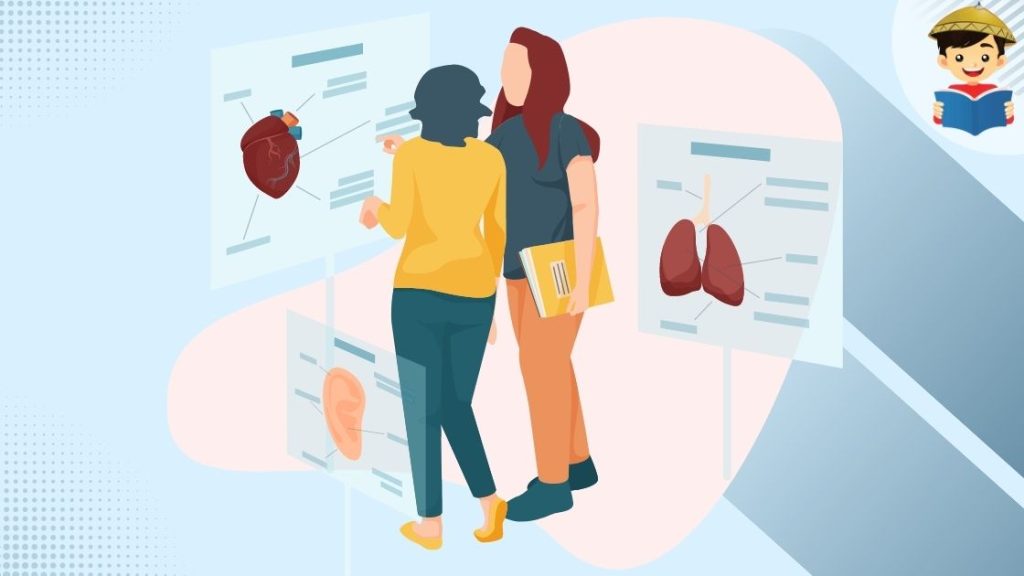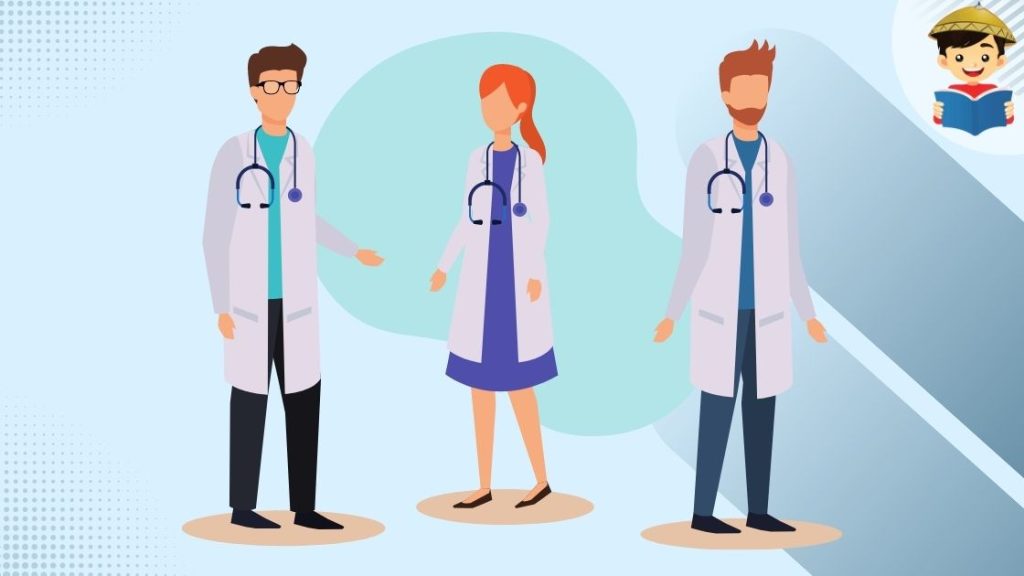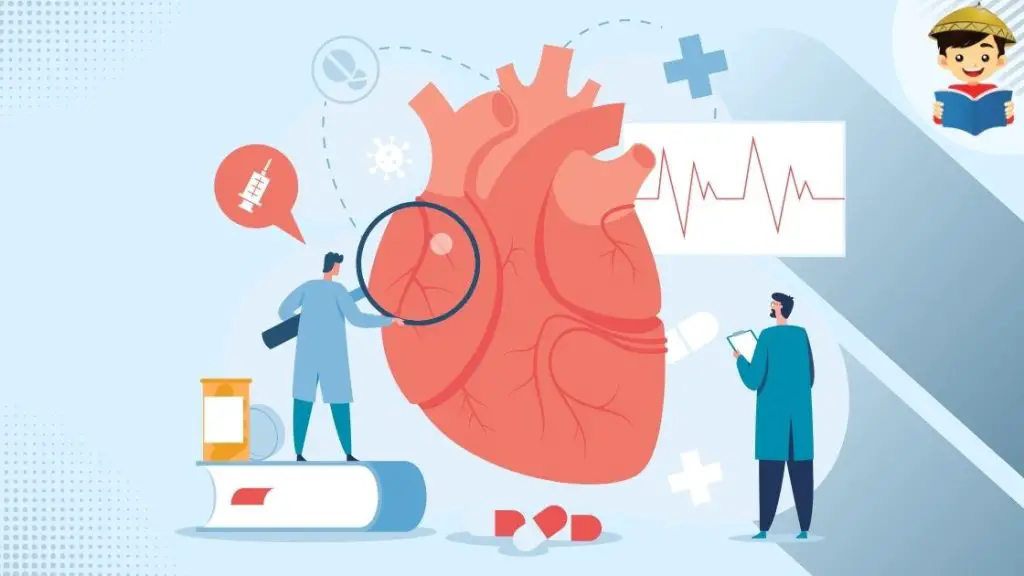How To Become a Doctor in the Philippines: An Ultimate Guide

When you ask kids what they want to be when they grow up, 9 out of 10 will probably answer “doctor.”
And when you ask for the reason, you’ll usually get a stereotypical response that starts with “because I want to help sick and poor people.”
From the children’s point of view, earning a Doctor of Medicine degree seems like an answer to humanity’s suffering.
But as fate would have it, most of these children choose different paths as adults. For the select few, however, the desire to become a doctor never fades even as they grow up.
I assume you’re either curious about this career path or already know from the get-go that you’re meant to become a physician. Whatever the case, this guide will show you the ropes (and realities) of becoming a doctor in the Philippines.
Table of Contents
How Many Years Does It Take To Become a Doctor in the Philippines?

Becoming a doctor usually takes 9-10 years unless you take a special program.
You must finish a 4-year bachelor’s degree, take three years of medical classes, and two years of hospital exposure as a clerk/junior intern and post-graduate intern.
Once you graduate, you must take the licensure exams to become a full-fledged MD. However, additional years have to be considered for post-graduate or specialty training.
Usually, this includes 3-5 years of resident specialization training. After passing the diplomate exams, you may opt to get subspecialty training that would take another 1-3 years, depending on the program.
Aside from specialty training, some medical doctors use their degrees to explore career options in public health, the academe, research, or the pharmacology/IVD industries. They may also undergo additional training tailored for these careers, like getting a Master’s degree or attending workshops that might take a few months to another 1-2 years.
Job Outlook for Doctors in the Philippines
Licensed physicians are and will continue to be in demand in the Philippines because of the following reasons:
1. The High Cost of Medical Education
Unlike in other countries where the government shoulders the tuition fees, the best that public universities in the Philippines can offer are scholarships for a limited number of students.
Many aspiring doctors are intimidated by the cost of medical education and the time it takes to build a career. As a result, the dwindling supply of doctors can’t keep up with the country’s continuous demand for competent physicians.
2. Brain Drain
We’ve heard of doctors turning into nurses to find greener pastures abroad. The lack of well-paying opportunities also forces a lot of medical graduates to get their residency training abroad, eventually settling down there and leaving only a few of their colleagues behind in the Philippines.
3. Maldistribution
According to the Philippine Health Systems Review in 2018 2, as of 2017, 40,775 physicians are working in institutions with a ratio of 3.9 doctors working for a population of 10,000. NCR has the highest density of doctors at 10.6, while island provinces have lower numbers of physicians, particularly the Visayas region and BARMM.
Unfortunately, most of these active doctors either left the country to work as doctors/nurses overseas or are concentrated in the National Capital Region.
Most physicians forego working in poor, far-flung provinces because the job doesn’t pay well, isolates them from their medical colleagues, and gives them less control over their work hours.
Considerations Before Deciding To Take Medicine
Before deciding on medicine as a career, there are some things that you have to think about very well. Some factors that you may want to consider are the following:
1. Funding
How do you plan to fund your pre-medical education? How about your medical school fees?
Remember that you’ll have to prepare enough funding to finish two degrees. Depending on your pre-medical course, you must prepare for tuition and laboratory fees. Before medical school, you have the NMAT preparation fees and application fees. Medical school costs as much as ₱100,000 or more per semester, excluding other fees like books, gadgets, medical tools, and other educational resources you need to invest.
Realistically speaking, the cost is daunting. You have to also factor in day-to-day living expenses. Additional expenses may also include the need for transportation or dormitories.
More than an individual decision, this career choice requires multiple discussions with your family. Your family should know the financial implications of going to medicine and that you will need moral and financial support for at least another ten years.
2. Your Long-Term Goals and Priorities
What are your dreams and plans for the future? Do you place a high priority on early financial stability?
Medicine might not be your path if you plan to achieve financial success at a younger age. The return on investment in medicine comes at a later stage.
Assuming you enroll in a medical school straight from college, you’ll spend the rest of your 20s studying and won’t be financially independent until you’re in your mid-30s.
You will also see same-aged friends achieving life milestones while you are still studying or training. Other goals like traveling, romantic relationships, and hobbies might also take a back seat while you are in medical school. You will be in the hospital almost daily for long hours at certain times in your training.
With medicine, your time and priorities will be challenged constantly. Do not be thoroughly discouraged, though, as achieving an excellent work-life balance in medicine is not impossible. But do keep in mind that it will require sacrifices before going in.
3. Your Attitude Towards Learning and Work
Medicine is a path of life-long learning. The studying will never end. It is a constantly evolving field; as such, the need to keep yourself well-read and updated never stops.
It does not stop after the exams, not after specialty training, and not even as a seasoned consultant.
Reflect well if you have that love and commitment to learning.
4. Realities of the Medical Field and the Healthcare System
You have to go into medicine with open eyes and awareness of the status of the Philippine healthcare system. Our healthcare system is far from perfect. You will meet patients unable to pay for their treatments and see families suffer from the inequity of the healthcare system.
Are you prepared to go on 24-36-hour duties with little to no sleep? Extend beyond that if there isn’t anyone else for the patients. Skip meals, family gatherings, birthdays, and anniversaries? It takes a lot of sacrifices. You’ll have endless sleepless nights away from your friends and family. Sleep and social life will become a luxury.
The lives of medical students and doctors are no joke. It’s nothing like Grey’s Anatomy. Hospital politics, demanding patients, almost inhumane work schedules, and a corrupt healthcare system will drain you of all positivity and make you question your life choices.
How To Become a Doctor in the Philippines: 10 Steps
1. Prepare As Early as High School

For the lucky few whose hearts are already in the medical profession as early as high school, good for you.
It will give you a head start since you’ll be more selective regarding the subjects to focus on and opportunities to take.
Since the Philippines has already implemented the Kinder to 12 (K-12) program, students can choose the academic track in their two-year Senior High.
If you want to be a doctor or any medical professional in the future, the Science, Technology, Engineering, and Mathematics (STEM) Strand is your best option.
With its curriculum focusing on advanced science subjects like Chemistry and Biology, the STEM track will build the academic foundation you need to get accepted into one of the few prestigious medical schools in the Philippines.
Another way to gauge whether the medical field fits you is to join volunteer programs. Volunteering not only looks good on your future resume, but it will also give you an idea of what it’s like to work in hospitals.
If local hospitals or clinics don’t offer volunteering jobs, shadow a family doctor or a relative who is a doctor. You may not be allowed to handle delicate tasks, but the experience will open your eyes to the realities of becoming a doctor.
Good academic performance should be kept in mind early. It improves your chances of getting accepted to a good school and your pre-medicine course of choice, and it is also essential to build good study habits as early as high school. Aim to graduate with good grades if you are also eyeing scholarships to fund your education.
Try to be as well-rounded as possible, focusing on the academic aspect and developing other skills, hobbies, and good relationships. It will all help you in the future.
2. Get Into College

After graduating from high school, you can either take the “fast track” or “slow/standard track” to get that dream Doctor of Medicine (MD) degree.
The “fast track” allows you to get the degree relatively quickly. Instead of spending four years to earn a baccalaureate degree and another four years in medical school, you’ll be entering a condensed program that can make you a doctor in as short as 6 to 7 years.
In the Philippines, some programs make this possible:
- University of the Philippines’ Intarmed picks aspiring doctors from the top 10% of UPCAT passers to complete a 7-year medical program straight from high school.
- De La Salle University’s Bachelor of Science in Human Biology allows qualified students to earn a Doctor of Medicine degree in six years. The first two years are spent studying at the DLSU-Taft, while the third year onwards is the “medicine proper” to be taken at DLSU-Med.
- De La Salle University in Dasmariñas has similar programs that shorten the time frame of completing medical education. One is the B.S. Biochemistry, where students enter medicine proper during the third year and the B.S. Medical Biology program, which is similar to the B.S. Human Biology offered by DLSU-Taft.
- The University of Santo Tomas is now offering a 6-year Medicine program3 beginning the school year 2019 to 2020. The “Innovative Doctor of Medicine” program picks its students through a stringent selection process. The lucky few who make it to the program can take medicine proper after only two years of general courses–and without completing a bachelor’s degree.
For most students, however, the “slow/standard track” of taking a bachelor’s degree before entering medical school seems to be the more logical choice.
For one, it gives them plenty of time to think about their future. A lot of things may change during those four years. You can wake up one day and realize you’re not in love with becoming a doctor but only with the glamour and prestige that come with it.
To realize this, you must take up a course that will prepare you well for medical school or expose you to hospital work.
Pre-medicine or “pre-med” courses are college courses structured to prepare you for medical school and internship challenges.
These include biological and Allied sciences programs like:
- B.S. Biology
- B.S. Nursing
- B.S. Psychology
- B.S. Medical Technology
- B.S. Pharmacy
- B.S. Public Health
- B.S. Physical Therapy
Each pre-med course has pros and cons, so it doesn’t matter which one you choose as long as you’re genuinely interested in the program. Remember, you will be spending four years studying the course, so you might as well choose something you can see yourself enjoying.
Another thing to remember when choosing a course is if you can also see yourself building a career in the field in case medicine does not work out for you, or you don’t pursue it.
Nursing teaches you to build rapport with patients and collaborate with other medical professionals. It also builds your clinical skills and trains you to translate “book knowledge” into practical application. Moreover, Nursing exposes you early to the clinical setting and the healthcare system.
Physical Therapy gives good exposure to anatomy, rehabilitation medicine, pain management, and different neuromuscular diseases. It also gives you exposure to patient communication. Psychology is ideal for future doctors interested in Neurology or Psychiatry.
Biology and Medical Technology are heavy on science subjects, which will help you ace the first few years of medical school. They both give good exposure to subjects in medical school, particularly anatomy, physiology, histology, microbiology, and pathology.
Public Health, meanwhile, is best for those who want to immerse themselves in primary healthcare and preventive and community medicine t work in the future.
Pharmacy is also a good course and gives you an edge in medical school regarding knowing medications during the clinical years. You can also pursue careers in pharmacovigilance and research as a doctor later.
While taking one of these pre-med courses is ideal, you can still pursue Medicine with an unrelated, non-science college course.
There are engineers, entrepreneurs, IT professionals, flight attendants, and teachers who only realized their desire to become a physician after graduating from college.
If you’re one of those late-bloomers, don’t fret. If you’ve completed a B.S. or a B.A. degree, you can take the NMAT, a mandatory exam for all aspiring doctors in the Philippines (more on later).
However, applicants who didn’t take pre-med courses in college often lack the required number of science units to be qualified and, therefore, may be required by the admissions office to take extra units in subjects like Biological Sciences, Chemistry, Physics as well as Mathematics, Social Sciences, Humanities, or Language and Communication.
3. Take a Gap Year (Optional)

Let’s say you’ve just graduated from college. You should already know whether taking Medicine is your right career path.
If you’re still unsure, it indicates you’re not ready for medical school. Someone with the passion for becoming a physician running through his veins will go ahead and enroll in a medical school–no questions asked.
Take the uncertainty as a sign to do some soul-searching. Know yourself more. Take a gap year. Get a master’s degree. Work for a while to save up more money.
Ask as many doctors as possible about the realities of becoming a doctor. If you think the rewards far outweigh the sacrifices, you’re already in good standing. You’ll fare better than those who quit after three years of medical school when the reality of what clinical work involves sinks in.
4. Choose Your Target Medical School

If you’ve already weighed the pros and cons of taking up Medicine and nothing stops you from doing so, it’s time to look for a medical school.
Here’s an updated list of all medical schools in the Philippines.
In choosing a medical school, you have to consider the following factors:
a. NMAT percentile cut-off: While some schools are more lenient regarding NMAT scores, well-known institutions reject applicants whose NMAT grades are below their cut-off scores. UP College of Medicine, for example, only accepts those with 90+ percentile rank/score in NMAT. UST and UERM, on the other hand, have cut-off scores of 85 and 75, respectively.
b. The minimum number of units for specific college subjects: If you didn’t take a pre-med course, you would most likely take extra credits as required by the medical school you’ll be applying for. For instance, the Pamantasan ng Lungsod ng Maynila (PLM), one of the country’s best and cheapest medical schools, requires all its applicants to have the minimum number of units in Mathematics, Social Sciences, Language and Communication, Humanities, and Sciences4.
c. Tuition fee: The bad news is that medical education in the Philippines is not free. Expect to shell out tens of thousands in tuition fees alone every semester. If you don’t come from a wealthy family, you will face stiff competition to get accepted into one of the few highly competitive public medical schools.
Knowing that the cost of medical education hinders many from pursuing their dreams of becoming a doctor, the Commission on Higher Education (CHED) offers Cash Grants to Medical Students Enrolled in State Universities and Colleges (CGMS-SUCs)5.
The program allows qualified individuals to study Medicine for free beginning school year 2017-2018. Cash grants will be equally divided among the following public medical schools:
- University of Northern Philippines
- Mariano Marcos State University
- Cagayan State University
- Bicol University
- West Visayas State University
- University of the Philippines-Leyte
- Mindanao State University
- University of the Philippines-Manila
Aside from maintaining a general weighted average every semester, students who will benefit from the free education must render one year of service in the country for every year that they receive a cash grant. After all, the subsidy is intended to alleviate the shortage of doctors in the Philippines.
Some medical schools offer academic scholarships like St. Luke’s Medical Center College of Medicine-WHQM6. Some LGUs like Pasig have tie-ups with private medical schools like Ateneo Medical School of Public Health to award medical scholarships to a few deserving students7.
Financial assistance programs are out there, so do your research and plan appropriately. You may also try to get into government-owned institutions with lower tuition costs, like PLM and UP Manila.
d. Board exam performance: A medical school’s passing rate in the past board examinations reflects the quality of education and training it provides its students.
While location matters when choosing a medical school, entrusting your future to an institution with a good track record is essential. To help you decide, we’ve analyzed the performances of the most reputable medical schools in the country in the previous board examinations:
e. Curriculum
At this point, you are already well aware of your study habits and how you learn effectively.
Talk to people from the medical schools you’re eyeing and ask about the curriculum. There are differences in how these schools train future doctors; you must also check if it is right for you.
For example, some medical schools initially focus on traditional learning methods, like lectures, and put skills and hospital exposure later in the curriculum. Some medical schools try to expose the students to the hospital and the clinical setting as early as the first year or second year through small sessions.
Try asking if learning sessions are purely through lectures and how guided the students are. Or, if you’re a self-paced learner and like going through materials on your own first, ask how much independence there is in the learning sessions.
How often do they test students? Are there weekly quizzes? Or are the exams block exams? Maybe you like being tested regularly for retention. Or maybe it puts too much pressure on you, and you would like testing spaced out like block exams.
Do they have many interactive learning modes or small group discussions, or will you just be given modules? Does the school use online learning platforms? How comfortable are you with that? Depending on how you adjust and learn, this may make or break your performance.
f. Culture
Try also to ask alumni about the medical school culture. Are there activities for students’ mental and emotional support? Are there events for socialization? Are the instructors and employees approachable?
Medicine is hard and competitive enough as it is. It is good to surround yourself with good people and a nurturing environment as much as possible.
While no perfect medical school will give you everything, ensure you get a good balance of the things, you need to learn and grow.
Top 15 Best Medical Schools in the Philippines
5. Ace the National Medical Admission Test (NMAT)

Before you can enroll in any medical school in the Philippines, you need to take and pass the National Medical Admission Test (NMAT).
It’s an aptitude exam that measures your readiness to handle the grueling academic demands of medical schools.
Like IQ tests, the NMAT is administered twice a year by the Center for Educational Measurement, Inc. (CEM), authorized by the Commission on Higher Education (CHED).
While it’s true that NMAT is not a 100% reliable predictor of your success in medical school, you shouldn’t take it lightly either. If your dream school has high standards, like UP Manila, you should score at least 90+ in NMAT. That score isn’t even considered above average, given that most applicants who get in have 99+ percentile scores.
To qualify for NMAT, you should be a graduate or a graduating student of any college degree course in the Philippines8. Foreign students and graduates are also welcome to apply. There are testing centers here and abroad, the specific locations of which are determined by CEM.
Medical schools admit students based on college grades and NMAT scores. Those with Latin honors and high NMAT scores easily secure slots in top medical schools.
The NMAT has two parts9. The first part is a mental ability section that tests verbal ability, inductive reasoning, quantitative ability, and perceptual acuity. You can prepare for these by studying suitable materials and through repetitive practice tests.
The second part is an academic proficiency test, and the sections are sciences: Biology, Chemistry, Physics, and Social Science. A good pre-medical course that exposes you to these subjects will give you a good advantage. However, don’t fret if you don’t have that background; you can still do well in this part of the exams through early preparation and hard work.
However, if you didn’t perform well in college, that’s all the more reason to study harder and score well on NMAT.
6. Apply to Your Chosen Medical School

If you aim to qualify in one of the best medical schools in the Philippines, then the NMAT is only the beginning.
Depending on your school of choice, the following are the requirements that you have to go through or submit before getting admitted:
a. NMAT – Again, different schools have different cut-off scores. If your score fails to meet the mark, you can either retake the NMAT or enroll in another medical school with a good track record but a lower or no specific NMAT score requirement.
b. Entrance examination – Some universities require all incoming medical students to undergo another screening process in the form of an entrance exam. If you just took NMAT recently or are fresh out of college, this shouldn’t be a problem. Otherwise, know beforehand the exam coverage and aim to get the passing or above average score set by them.
c. Police clearance – Medical schools require enrollees to submit police clearance, NBI clearance, or both to prove they were not involved in moral turpitude (forgery, robbery, rape, etc.)
d. Certificate of Eligibility for Admission to a Medical Course (CEMed) – The medical school usually requests this document once the student passes all the screening procedures like the entrance exam, interview, etc. It can be obtained from the regional offices of the Commission on Higher Education (CHED).
If you’re a foreigner, you may apply at the CHED Office of Student Services (OSS) inside the National Engineering Center Building in U.P. Diliman.
Below are the requirements needed to get a CEMed:
- Certificate of good moral character
- Birth Certificate
- An original or duplicate copy of the Examination Report Form showing your NMAT score
- Transcript of Records (TOR)
- For graduates of government schools, a copy of the Diploma or Certificate of Graduation authenticated by the school registrar
- Duly accomplished CEMed application form
e. Recommendation letter – This signed document is submitted for formality. It should come from a reputable source like a faculty member or college dean of the school where you came from. Take note, however, that most medical schools don’t require this. We’ve included it so you can be prepared if your medical school requests one.
f. Interview – Whereas your NMAT and college grades may predict how well you can handle the academic demands of medical school, the panel interview will assess whether you’re indeed cut out to be a doctor.
It can be a one-on-one or a panel interview like at UP College of Medicine.
The interview is a chance for the admissions to dig deeper into your character, evaluate your intentions, and test whether you have the emotional and mental capacity to weather the storms of medical school (and beyond).
Expect the questions to be similar in format and content with the following:
- Why do you want to become a doctor?
- What makes you a better choice in comparison to others?
- What will drive you to study and push through, even if it is physically and mentally challenging?
- How motivated are you?
- If you won’t be a doctor, what would be your career of choice?
- Do you have a backup plan should you be unable to finish medicine?
- How do you de-stress?
- What was the most stressful situation that you had? Can you tell me how you handled this situation?
- Why should we choose you instead of the other applicants?
In some instances, the interviewees may also veer off from these types of questions and ask something unexpected, like those related to medical issues on a national scale:
- If you were given a chance to solve a single national issue, what would be your choice, and how would you deal with it?
- What do you think is the biggest issue in healthcare, and how would you solve it?
To ace the interview, all you have to do is be yourself. The interviewees probably have years of experience doing this, so they can immediately smell whether you’re being genuine.
Take note that the admission committee of medical schools will also look at extracurricular activities and background.
High-ranking medical schools eye well-rounded students who are academically excellent and show great potential in other aspects, particularly leadership, volunteerism, and research.
So if you have talents, awards, publications, special experiences, and training, highlight those in your application and interview to give you that edge.
7. Survive Medical School

Enrolling in a medical school makes everything a level playing field.
It doesn’t matter if you took Engineering or Biology in college; everyone starts from zero.
The Doctor of Medicine degree in the Philippines is a five-year graduate program that will build your foundation as a future doctor.
The first three years are filled with academic instructions from laboratory work and lectures.
Freshmen should expect to study basic sciences like Biochemistry, Preventive Medicine, Community Health, Human Anatomy and Physiology, Psychiatry, and Medical Practice I.
Second-year students will study fundamental concepts of Pharmacology, Microbiology & Parasitology, Pathology, Medicine and Surgery, Medical Economics, and Psychiatry II. Most medical schools in the Philippines already expose their students to hospital work as early as their sophomore year to teach them basic skills like taking or recording a patient’s medical history.
In the third year, medical students will immerse themselves in disease management, learning more about the pathophysiology, diagnosis, and clinical management of common and rare medical conditions. At this point, you will interact with the patients in the hospital setting.
At the end of the second or third year and before you transition to the internship, medical students usually must overcome one final hurdle: a thesis, a clinical oral or practical exam, or an independent research project.
The fourth year is your year as a junior intern. This phase is also known as clinical clerkship, during which you will be rotated in different hospital departments.
Expect to spend several weeks to two months in various fields like Surgery, Obstetrics, Gynecology, Pediatrics, Internal Medicine, and various subspecialties. You will be supervised by a faculty who will evaluate your performance after each hospital rotation. You will mainly be working with hospital residents in your rotations.
In clerkship, you practice proper patient history taking and physical examination. Exposure to real cases will also help you hone your clinical eye and learn from the consultants and residents how they manage their patients.
You are also expected to learn practical skills like inserting an intravenous line, inserting a Foley catheter, wound cleaning, and assisting in some medical and surgical procedures. You are expected to do rounds on your patients and monitor their status. At this point, you act and work as a medical team member in the hospital.
After four years in medical school, you will finally graduate and earn the “Doctor of Medicine” diploma.
Once you graduate, you will then transition to a post-graduate internship. This is the last phase of your training. Like before, you will remain under the supervision of a faculty member known as the “attending physician.” You are given more responsibility; specifically, you’ll supervise the junior interns in the same rotation.
The post-graduate internship allows you to train more intensively and get more exposure to your areas of interest. This may include different subspecialties like Dermatology, Urology, Gynecology, Pediatrics, Obstetrics, etc. Post-graduate interns are expected to have strengthened their clinical skills in clerkship and are now given more patient assessment and management roles.
It’s a critical period in your medical education since you won’t be allowed to take the licensure examination and practice your profession if you fail to complete the required internship hours. Maximize your internship years to see as many cases as you can. Authentic learning comes from experience. Seeing, interacting, applying what you learned, and caring for the patients yourself will teach you faster than just purely reading your books.
Knowing what lies ahead is one thing, but being there and surviving med school is another. And the best way to properly navigate your student life is to learn from those who have already come out of it. Below are just some of the valuable tips every incoming medical student ought to know:
- Studying to become a doctor comes with a price. And no, we’re not just talking about the expensive tuition fees and other expenses, which should be clear to you now. Med school will take a toll not just on your finances but also on your social life. While the first three years are focused mainly on studying and passing your examinations, your clerkship (4th year) will require you to spend countless hours on hospital duty, which means not seeing your friends and joining your family on special occasions and holidays.
- It’s not just what you know but who you know. Even the brightest medical students won’t survive medical school as loners. Make friends with higher-year students; they can give you study materials and insider tips you would otherwise have no access to. Build meaningful connections with professors and other doctors; they will serve as your mentors and possibly refer you to excellent opportunities in the future. Learn to use work politics to your advantage; getting along with all types of people will help you advance your career just as much as your smarts and skills.
- Never cram your way out of med school. If you’re only there because your parents want you to, you’re not fooling anyone except yourself. Remember, a half-hearted medical student is a future liability. One day, you and your stocked knowledge will be the only ones between a patient’s life and death. Study every day not because your grades depend on it, but for all the lives you’ll be able to save once you become a full-fledged doctor.
- Develop self-discipline and a proper work ethic. At the end of it all, what will get you through medical school isn’t pure talent or luck. It’s the amount of effort you put in every day. The more hard-working you are and the more likely you will get out of your comfort zone, the more you will learn. People underestimate the effort of showing up daily and trying their best to do the job well. There will be bad days and experiences, but they will make you a better doctor and person.
- De-stress. Unless you want to burn out, you must find a way to relax at every chance. If your school has sports or dance organizations, don’t waste the opportunity to join. Do activities that keep your body moving and your mind away from the stresses of med school. Busy student life should never be an excuse to take care of yourself.
8. Pass the Physician Licensure Examination

A “Doctor of Medicine” graduate can’t work without a license to practice. And to get this license, he/she must pass the physician licensure exam twice yearly (usually in March and September).
The Board of Medicine (BOM) administers the exam under the Professional Regulation Commission’s (PRC) supervision. It has two categories, each covering six subjects10:
- Basic sciences (Anatomy, Physiology, Biochemistry, Microbiology, Pathology, and Pharmacology).
- Clinical sciences (Internal Medicine, Obstetrics & Gynecology, Pediatrics, Surgery, Legal Medicine, and Preventive Medicine).
To pass the exam, you must have a board exam average rating of at least 75% with no grade lower than 50% in any subject.
Medical students usually have 2 to 6 months after a post-graduate internship allotted for the review. If you paid your dues in med school and didn’t take any shortcuts, you need to refresh your memory on all the fundamental concepts you’ve learned over the years.
Take special care not to be overconfident when preparing for the licensure exams. Focus on your weaknesses as a medical student and study high-yield topics and materials. Suppose you can afford to go to a review center. They will be able to coach you on how the exams are done, what high-yield material is, and give you summarized lectures.
You can self-review if you do not have the budget for a review center. Just keep in mind to be disciplined with your time. As much as possible, I allot a lot of time answering questions and practicing tests. This exercise allows you to discover mastery of the topics, helps you retain information faster, and practices your testmanship. It also allows you to assess how well you do under time pressure so you can prepare for that for the actual examinations.
Once you overcome all the hurdles, your “MD” license will finally allow you to work as a general practitioner or earn from “moonlight” jobs. Alternatively, you can take another gap year before going to residency training. Once you overcome all the hurdles, your “MD” license will finally allow you to work as a general practitioner or earn from “moonlight” jobs. Alternatively, you can take another gap year before going to residency training.
9. Undergo Medical Residency Training

After getting their licenses, most new doctors in the Philippines opt to go through a residency training program to further their careers.
If you don’t like this path, you can immediately establish a private practice to work as a general practitioner. Companies also hire general practitioners11 and pay them fixed monthly salaries to work in various settings like hotels, schools, clinics, etc.
It is essential to highlight here that residency and specialty training is not the only career path for a doctor after getting their license. Suppose you do not see yourself doing purely clinical practice. In that case, you may use your medical degree to go into other fields like Public Health, Health Management, Policy Training, Research and Development, Pharmacology and In-Vitro Diagnostics Industries, Aesthetics, or Academe/Teaching.
There are various career paths for general practitioners aside from specialty training. Some of these paths may be equally fulfilling for you.
It’s a matter of knowing yourself well and returning to your priorities and interests and where they are aligned.
An advantage of getting specialty training is expanding your clinical practice and honing your skills. General practitioners can manage patients at the primary healthcare level. Specialists and subspecialists can cater to more complex cases—the more difficult and rare the specialty, the higher the demand and the pay.
If your goal is to become a clinician, set up your practice, and this is what you see yourself doing as a life-long career, apply for residency training.
Getting a slot for your medical residency training is like applying for a job. You’ll be competing with other new doctors aiming for the same specialization, with some of them closely connected to the higher-ups or are board exam topnotchers, so their applications are prioritized over others.
You may prepare for applications and increase your chances of getting accepted by doing well in the qualifying examinations, acing your interview, and showing good work performance during the pre-residency period. As with previous experiences, research and choose a training program that balances your needs well.
While deciding on a program or waiting to be accepted to your program, you can get moonlight jobs to earn income.
“Moonlighting” refers to the practice of working a second job outside your main/primary job. For example, suppose the hospital where you want to get residency training doesn’t have openings yet. In that case, you can grab an opportunity to “moonlight” (meaning you’re an independent physician doing work outside the scope of the residency training program) in one of its facilities instead.
As a moonlighter, your limited experience may backfire when encountering cases you know little about, so think twice before accepting new opportunities.
In addition, Philippine hospitals only allow moonlighters who aren’t residents yet. Once you’ve been accepted into their residency program, you can no longer take moonlighting jobs. Once accepted, medical residents may spend 3 to 6 years working in the hospital, depending on their chosen field of specialization. There’s even a joke that medical residents are called such because they literally “reside” in the hospital for the entire duration of their training.
The following is a list of common fields of specialization and the corresponding number of years you’ll spend in residency training12:
- Anesthesia – 3 years
- Dermatology – 3 years
- ER Medicine – 3 years
- ENT – HNS – 4 years
- Family Medicine (Traditional) – 3 years
- Family Medicine (Practice-based) – 4 years
- Internal Medicine – 3 years
- Obstetrics and Gynecology – 4 years
- Ophthalmology – 3 years
- Orthopedics – 4 years
- Pathology – 4 years
- Pediatrics – 3 years
- Psychiatry – 4 years
- Radiology – 4 years
- Rehabilitation Medicine – 3 years
- Surgery – 4 to 5 years
- Urology – 6 years
- Radiation Oncology – 4 years
- Nuclear Medicine- 3 years
- Dermatology – 3 years
- Neurology – 4 years
- Rehabilitation Medicine – 3 years
Private hospitals offer ₱12,000 to ₱20,000 (with or without benefits like SSS and Philhealth), while government hospitals offer a relatively higher take-home pay of anywhere between ₱30,000 to ₱50,000 (mostly with benefits).
While residents in government hospitals have higher salaries, they have three times more workload, which could mean little to no sleep daily.
The competition is also more intense in public hospitals, so some are willing to share the slot with another doctor just to get accepted, lowering the salary.
If you want less competition, take the road less traveled: military residency training.
The drawback is you’ll undergo the same military training as everybody else, which can be physically taxing, not to mention “dirty,” unless you’re signed up to the Air Force, where military training is limited to airports.
For those interested in becoming a military doctor, try to secure your internship at the AFP Hospital in V. Luna, so you’ll know what’s waiting for you in residency.
As medical residents in military hospitals, here are some of the things you can expect:
- You will be trained to be an elite soldier.
- Medics, not doctors, are the ones deployed on the battlefields.
- You will be assigned to different regions in the country.
- You’ll start as P2LT and slowly climb the rank of Captain during the training.
- You will be on the front lines during emergency cases.
- You will be issued a gun with a permit to carry.
- You’ll be paid ₱50,000 to ₱60,000 during your residency training.
All residency training programs in the Philippines are regulated by their respective societies. For example, residents specializing in psychiatry are regulated by the Philippine Board of Psychiatry, future pediatricians by the Philippine Board of Pediatrics, and so on.
These societies are also tasked with administering diplomate board examinations at the end of the training programs to ensure the competency of the doctors joining them.
Once you pass the exam, you can work with a guaranteed higher salary or proceed to a fellowship for your subspecialization.
10. Get Into Fellowship Training

When you’re done with your residency training, you have two choices: work and start earning money or spend a few more years pursuing a subspecialty (also known as fellowship).
At this point, years of training and working in the hospital should give you an idea of what field to subspecialize in.
Like in residency training, you must undergo a process to get accepted into a hospital that offers a fellowship training program.
You’ll spend another 2 to 4 years training and working in the hospital for your chosen subspecialty. Oncology, for example, requires three years of residency in Internal Medicine and another three years of fellowship training before you can become an oncologist.
The following are the subspecialties of Internal Medicine you can consider pursuing. Fellowship will take at least another two years:
- Cardiology
- Endocrinology
- Gastroenterology
- Geriatric Medicine
- Oncology and Hematology
- Hospice and Palliative Medicine
- Infectious Diseases
- Nephrology
- Pulmonary Diseases
- Rheumatology
Surgical specialties like General Surgery, OB-Gyne, Urology, ENT, and Ophthalmology also have subspecialty training. As with medicine, this may take another 1-3 years, depending on the program.
Radiology and Pathology also have different subspecialty training, needing another 1-2 years of fellowship training.
After completing your fellowship, you will take another exam. Passing it gives you a certification so you can work as a specialist. Your success as a specialist largely depends on the quality of the training you received during residency and your choice of training institution (hospital) for your fellowship.
Specialists who have completed their residency training and have been qualified in their chosen field of specialization can now fill one of the various lucrative positions offered by both private and public institutions.
A specialist surgeon, for example, can earn over ₱100,000 from one operation alone in his private practice and earn additional income as a consultant in a training hospital.
Specialists can work in a specialized private clinic, private hospital, or a government hospital. They may also land an administrative position in the Department of Health (DOH) and other similar government agencies.
Tips and Warnings
- Applying for scholarships and medical assistance takes another level of planning and research. Requirements will also vary depending on the medical school, the financial assistance program you’re applying to, and your current socioeconomic status.
- The right medical school and career path will ultimately depend on your needs and life goals. Do not pressure yourself into going to the common choice or path.
- The goal is to build a happy life and a fulfilling medical career. Doctors may be called to medicine out of vocation or the want to help others, but at the end of the day, we are human beings with our own lives, families, and needs. It is alright to change your mind as you are discovering yourself. You cannot help others if you are unhappy with your own choices.
- Life will be hard while in medicine. But it is also an experience like no other. You will see things and have experiences that ordinary people would not have. Your patients and their families will trust you. There is no greater satisfaction than seeing people get better because of your efforts. A life in medicine is an honor, privilege, and responsibility.
- Specialty training might take a few more additional years on top of the ten years you have already invested in medicine, but it also gives you the expertise to be able not only to treat but train new doctors. You can also use your knowledge to contribute to the expanding field of medicine through research and collaborations.
Frequently Asked Questions
1. What if I cannot afford the fees to become a doctor? What are my alternatives?
You have the option to apply for academic scholarships, scholarships from LGUs and other government agencies, or apply to government-owned medical schools. Another option would be to work after college and save money for tuition fees. If truly needed, also consider the possibility of educational loans.
2. Can I have two specializations?
Theoretically, you can apply to other residency specialization training after finishing the previous one. However, in practice, there is not much value in getting two different specialties unrelated to one another. Ideally, you get a subspecialty under that specialization to further your training and continue practicing in the same field. Again, this depends on your goals and needs.
3. What if I want to undergo specialty training abroad?
There are entirely different paths and requirements when applying for specialty training abroad. You must pass different examinations and processes to be accepted, depending on your target country. Examples include the USMLE exams for US residency and the PLAB (future UKMLE) for UK residency. The cost for applications is also higher, and it is very competitive.
The process is also longer, adding another year or two for preparations. If you plan to train abroad, research and plan early.
4. Do all hospitals offer specialty training?
No. Only hospitals that pass requirements and certifications are allowed to be teaching hospitals. Usually, these are tertiary hospitals that have a lot of cases.
5. Is there an age limit for medical school acceptance/training? Is there a maximum number of years allowed to finish medical training?
Some medical schools have an age limit. Most schools have no age limit, but some medical schools do not accept those aged 40-50 years old. In some schools, if aged 50 and older, you will be required medical clearance. For specialty training, you have to finish the training within the maximum allowable years set by the institution.
6. Can I work while in med school?
Yes, it’s possible. However, this is not recommended as it can affect your physical and mental health. Unlike law schools that offer night or weekend classes to full-time employees, medical schools don’t offer that luxury. It’s either commit 100% or drop out.
Having said that, you can still help with the finances by availing of scholarships or getting part-time jobs ONLY during your summer vacations.
Working while studying, on the other hand, is downright suicidal. Even the brightest full-time students are already struggling to pass their subjects; how much worse if you’re a working medical student?
But again, if you’re determined, anything is possible. This has been proven by Jomel Lapides13, who, despite working while in med school, was able to pass and top the 2020 Physical Licensure Examination.
7. How much do doctors earn in the Philippines?
It depends on the doctor’s specialization or what stage he is in his career.
After graduating from med school, a new doctor can either take moonlighting jobs or pursue general medicine practice. General practitioners with small private clinics may earn between ₱300 to ₱500 for every patient consultation. Some are also employed by hospitals where they refer their patients.
Those who work in hospitals get a monthly pay of ₱20,000 to ₱35,000. However, experienced doctors in public hospitals get paid more, with some taking home as much as ₱80,000+.
Suppose you’re into public health and have the heart to serve rural communities through the “Doctors to the Barrios” program of the Department of Health (DOH). In that case, you’ll be entitled to receive a monthly salary equivalent to Salary Grade 24 or ₱64,000+, along with other benefits and allowances.
If you opt for medical residency training to further your career, expect to be paid ₱30,000 to ₱50,000 per month in public hospitals or ₱15,000 to ₱20,000 per month in private institutions throughout your 3 to 5 years of residency.
Doctors already in their fellowships may or may not get salaries depending on whether or not they have sponsorships.
Today, cosmetic, cardiac, and orthopedic surgery are the most lucrative. But in the long run, a doctor’s marketing skills or business sense will help him gain more long-term clients and generate more profits, regardless of specialization.
8. Can I study Medicine in the Philippines as a foreigner?
Save for the University of the Philippines, there are medical schools in the Philippines that accept foreign applicants. There are NMAT testing centers in the U.S. for those interested in pursuing medical education in the Philippines.
Depending on the school, you may be required to take NMAT, MCAT, or both. MCAT is a little bit harder, although the subjects included are similar to those in the second part of NMAT.
One caveat: Foreigners are usually charged an exuberant “foreigner” fee on top of the tuition fee. Especially if one or both of your parents are Filipino, I recommend applying for dual citizenship so you can avoid getting charged the said fee.
For more information on how to study Medicine in the Philippines as a foreigner or an international student, please go to this link.
References
- What's next for 2020 physician licensure exam topnotcher? (n.d.). Retrieved January 17, 2023, from https://www.cnnphilippines.com/news/2020/11/27/Jomel-Lapides-2020-Physician-Licensure-Exam.html
- Dayrit, M., Lagrada, L., Picazo, O., Pons, M., & Villaverde, M. (2018). The Philippines Health System Review. New Delhi: World Health Organization.
- Suarez, A. (2018). UST to offer 6-year medicine program. The Varsitarian, p. 9. Retrieved from https://issuu.com/varsitarianust/docs/9th/9
- Medicine. (2022). Retrieved 10 August 2022, from https://www.plm.edu.ph/academics/colleges/medicine
- CHED: Free tuition for medical students in state universities and colleges starting 2017. (2018). Retrieved from https://www.cnnphilippines.com/news/2017/06/16/CHED-free-tuition-medical-students.html
- Financial Grants and Aid. Retrieved 10 August 2022, from https://slmc-cm.edu.ph/admissions/scholarship-aid/
- Yalao, K. (2022). Pasig LGU, Meralco, ASMPH sign MOA for medical scholarships. Retrieved 10 August 2022, from https://mb.com.ph/2022/03/02/pasig-lgu-meralco-asmph-sign-moa-for-medical-scholarships/
- Admission to Philippine Medical Schools | NMAT Online Registration System. (2018). Retrieved from https://www.cem-inc.org.ph/nmat/admission-philippine-medical-schools
- Brief Description of the Test. Retrieved 10 August 2022, from https://www.cem-inc.org.ph/nmat/brief-description-test
- R.A. 2382. Retrieved from https://www.lawphil.net/statutes/repacts/ra1959/ra_2382_1959.html
- Department of Labor and Employment (DOLE). (2001). Procedural Guidelines for Accreditation of Practitioners, Consultants and Organizations on Occupational Safety And Health. Retrieved from https://oshc.dole.gov.ph/wp-content/uploads/2020/09/procedural-guidelines-do-16.pdf
- HCMI Education. Retrieved from http://www.hcmieducation.com/Residency.htm
- What’s next for 2020 physician licensure exam topnotcher? (n.d.). Retrieved January 17, 2023, from https://www.cnnphilippines.com/news/2020/11/27/Jomel-Lapides-2020-Physician-Licensure-Exam.html
Written by Camille Lamera, MD
Camille Lamera, MD
Camille Lamera is a medical doctor with clinical and government work experience. She has always been passionate about health education and public service, having worked in two government offices and as a part-time educator in Preventive and Community Medicine. She is currently working as a doctor in public health while also doing freelance academic and scientific writing.
Copyright Notice
All materials contained on this site are protected by the Republic of the Philippines copyright law and may not be reproduced, distributed, transmitted, displayed, published, or broadcast without the prior written permission of filipiknow.net or in the case of third party materials, the owner of that content. You may not alter or remove any trademark, copyright, or other notice from copies of the content. Be warned that we have already reported and helped terminate several websites and YouTube channels for blatantly stealing our content. If you wish to use filipiknow.net content for commercial purposes, such as for content syndication, etc., please contact us at legal(at)filipiknow(dot)net